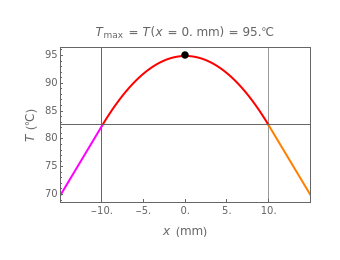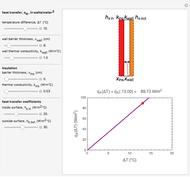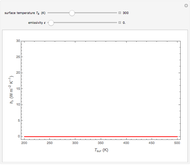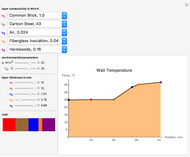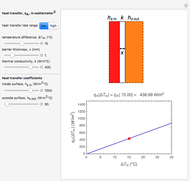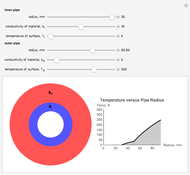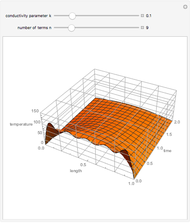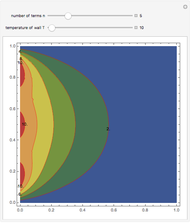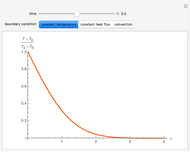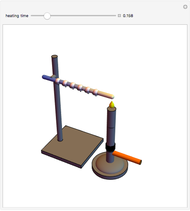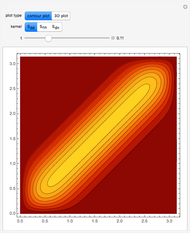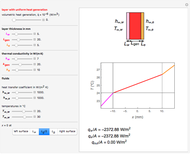Steady-State Heat Transfer through a Composite Plane Wall

Requires a Wolfram Notebook System
Interact on desktop, mobile and cloud with the free Wolfram Player or other Wolfram Language products.
This Demonstration calculates the temperature profile across a composite plane wall. The wall is exposed to convection on both the right and left sides. The central layer has uniform volumetric heat generation. The parameters correspond to thickness and thermal conductivity for each of the three layers, internal heat generation for the central layer, and temperature and convective heat transfer coefficients for the fluids in contact with the wall surfaces on each side. The top graphic displays the nomenclature used for each layer (notice the color coding). The location and value of the maximum temperature within the layer with heat generation is displayed on the top of the plot (only when heat generation is larger than zero). The heat fluxes  at each interface between fluid and wall are described at the bottom, followed by the rate of energy per surface area that exits the wall. There are five choices for the
at each interface between fluid and wall are described at the bottom, followed by the rate of energy per surface area that exits the wall. There are five choices for the  axis origin: the left surface of the wall, the interface between the first two solid layers
axis origin: the left surface of the wall, the interface between the first two solid layers  , the center of the layer with heat generation
, the center of the layer with heat generation  , the interface between the second and third wall
, the interface between the second and third wall  , or the right surface of the wall.
, or the right surface of the wall.
Contributed by: Cibele V. Falkenberg (February 2016)
Open content licensed under CC BY-NC-SA
Snapshots
Details
Snapshot 1: Without any heat being generated, the temperature profile is linear in each layer (with the slope dependent on the thermal conductivity). The heat flux across the wall is constant, and is driven by the temperature difference between the fluids. You can shift the origin of the plot using the buttons at the bottom of the controls. The directionality for the heat fluxes is consistent with the  axis in the plot.
axis in the plot.
Snapshot 2: The location of the maximum temperature and fraction of the heat being transferred to each side depends on the resistances for convection and conduction on each side.
Snapshot 3: By significantly increasing the resistances on one side (left), the location of the maximum temperature also shifts toward the same side of the wall, approaching the limit of the adiabatic boundary condition. As a consequence, most of the heat generated in the volume must exit through the opposite surface.
In a steady state, the rate of energy generated within the wall (the product between  and the volume of the central layer
and the volume of the central layer  ) equals the sum of the heat transfer rates leaving each side of the wall. Because the vector for the heat flux follows the direction of the
) equals the sum of the heat transfer rates leaving each side of the wall. Because the vector for the heat flux follows the direction of the  axis in the plot (positive from left to right), the heat transfer rate leaving the left surface is equal to
axis in the plot (positive from left to right), the heat transfer rate leaving the left surface is equal to  . The heat fluxes are described as
. The heat fluxes are described as  , where
, where  is the area on each side of the wall (
is the area on each side of the wall ( plane).
plane).
Reference
[1] T. L. Bergman, A. S. Levine, F. P. Incropera, and D. P. Dewitt, Fundamentals of Heat and Mass Transfer, 7th ed., New York: Wiley, 2011.
Permanent Citation

